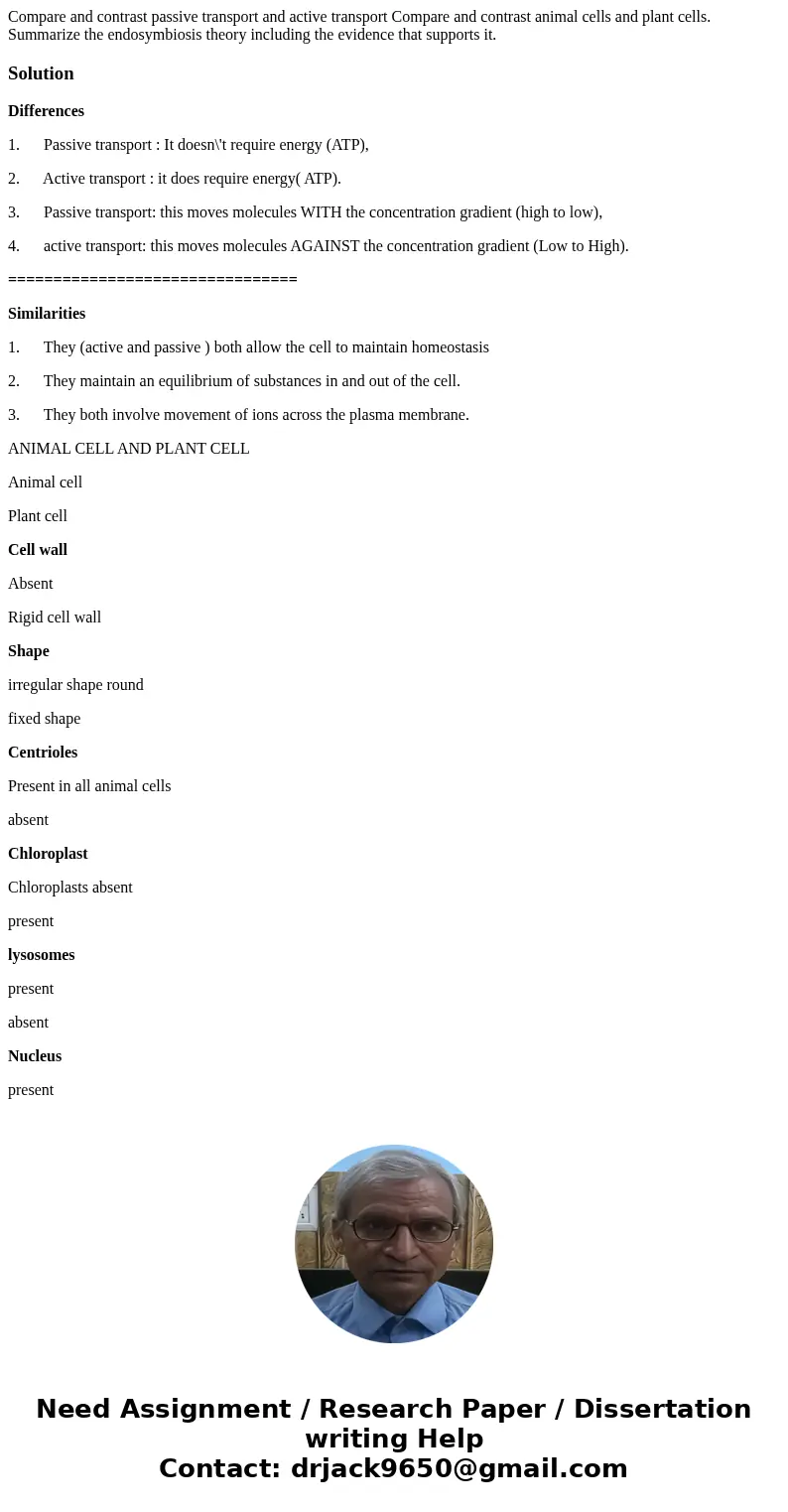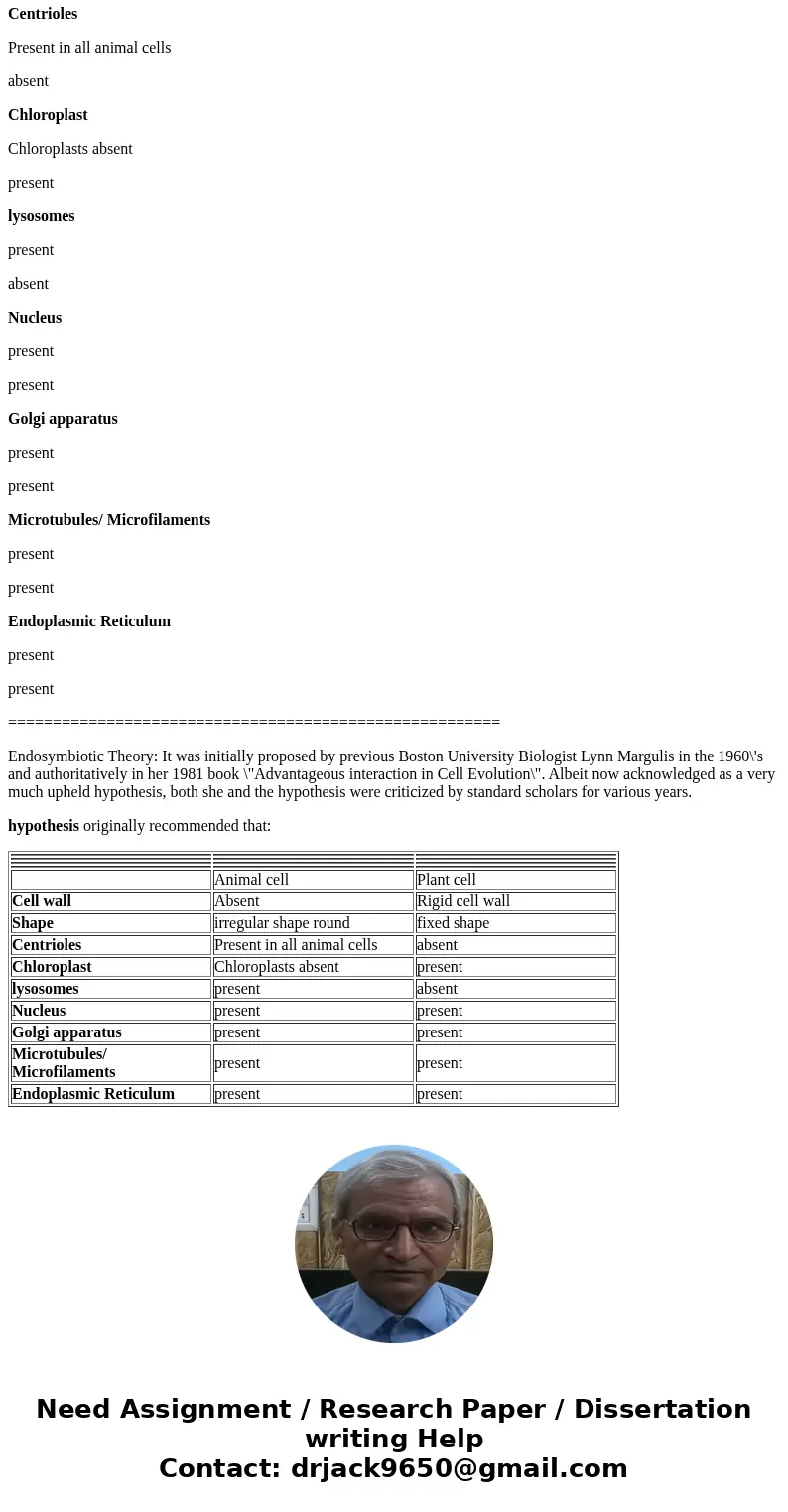Compare and contrast passive transport and active transport
Solution
Differences
1. Passive transport : It doesn\'t require energy (ATP),
2. Active transport : it does require energy( ATP).
3. Passive transport: this moves molecules WITH the concentration gradient (high to low),
4. active transport: this moves molecules AGAINST the concentration gradient (Low to High).
================================
Similarities
1. They (active and passive ) both allow the cell to maintain homeostasis
2. They maintain an equilibrium of substances in and out of the cell.
3. They both involve movement of ions across the plasma membrane.
ANIMAL CELL AND PLANT CELL
Animal cell
Plant cell
Cell wall
Absent
Rigid cell wall
Shape
irregular shape round
fixed shape
Centrioles
Present in all animal cells
absent
Chloroplast
Chloroplasts absent
present
lysosomes
present
absent
Nucleus
present
present
Golgi apparatus
present
present
Microtubules/ Microfilaments
present
present
Endoplasmic Reticulum
present
present
=======================================================
Endosymbiotic Theory: It was initially proposed by previous Boston University Biologist Lynn Margulis in the 1960\'s and authoritatively in her 1981 book \"Advantageous interaction in Cell Evolution\". Albeit now acknowledged as a very much upheld hypothesis, both she and the hypothesis were criticized by standard scholars for various years.
hypothesis originally recommended that:
| Animal cell | Plant cell | |
| Cell wall | Absent | Rigid cell wall |
| Shape | irregular shape round | fixed shape |
| Centrioles | Present in all animal cells | absent |
| Chloroplast | Chloroplasts absent | present |
| lysosomes | present | absent |
| Nucleus | present | present |
| Golgi apparatus | present | present |
| Microtubules/ Microfilaments | present | present |
| Endoplasmic Reticulum | present | present |


 Homework Sourse
Homework Sourse